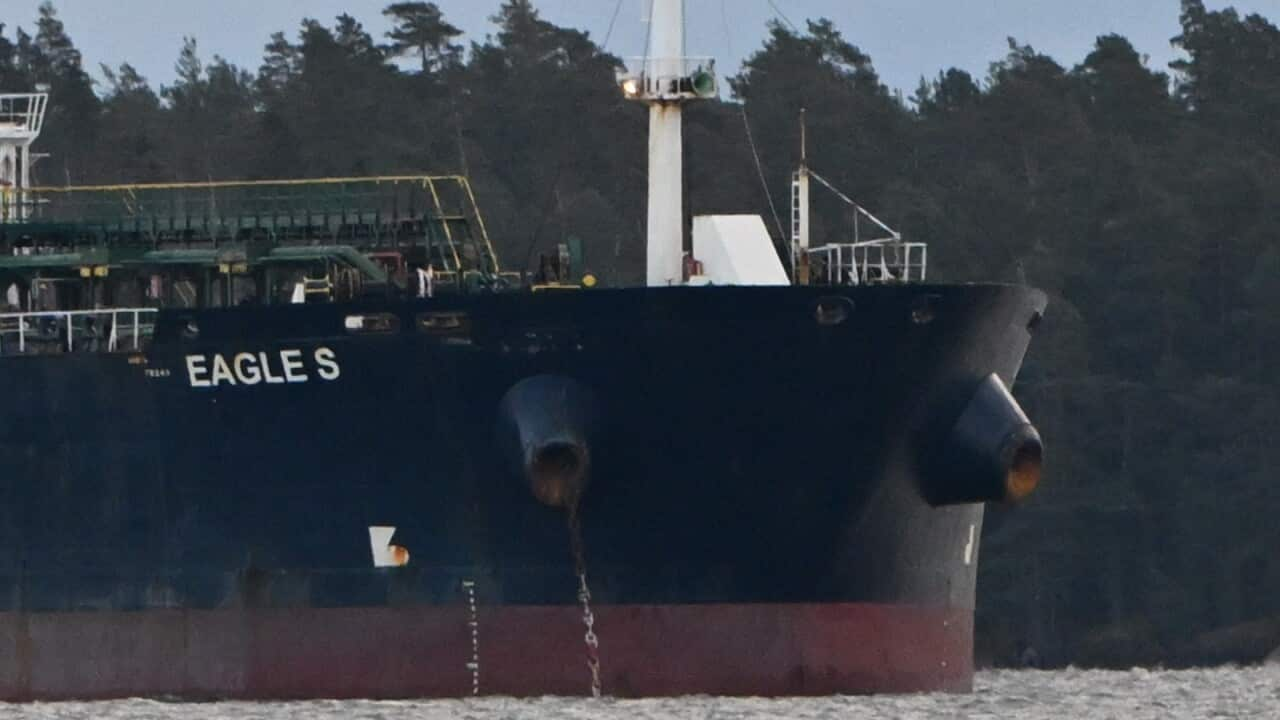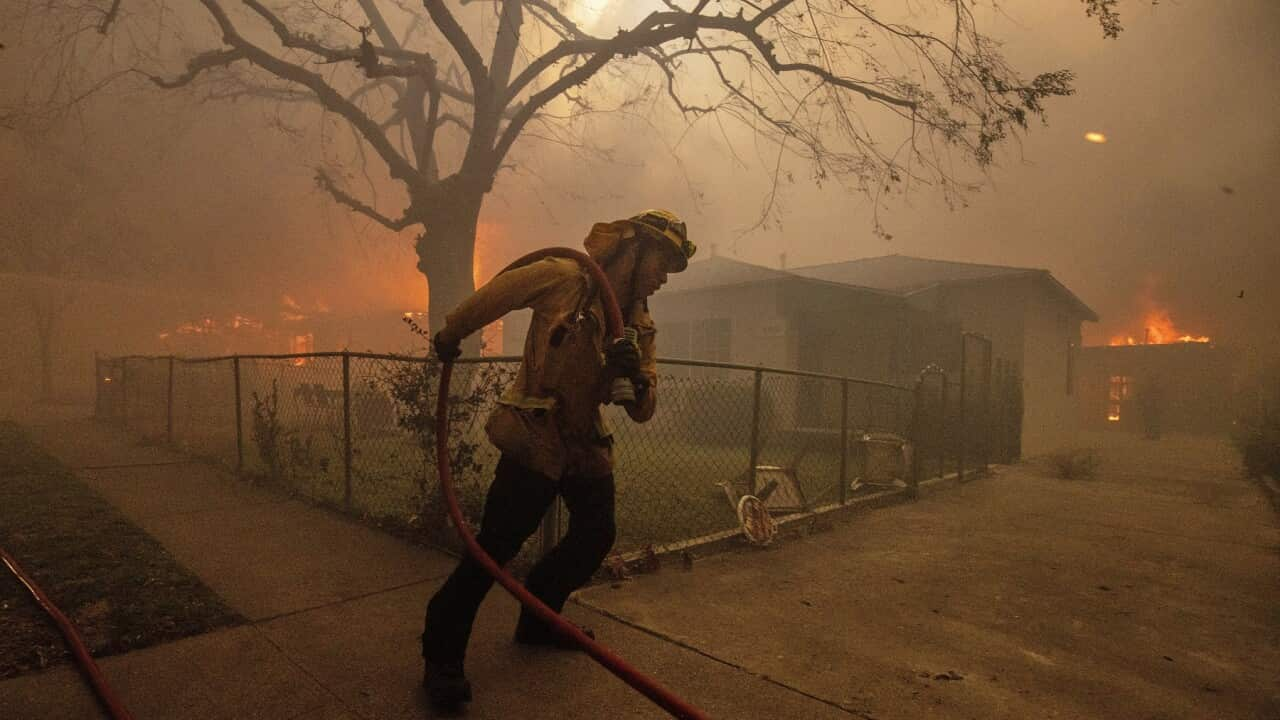TRANSCRIPT
Finland has seized a Russian oil tanker which is reportedly responsible for causing an outage on a large power cable connecting the country to Estonia.
Finnish investigators say they found a trail along the seabed almost 100 kilometres long around the site of an underwater electricity cable that was damaged on Christmas Day in a suspected act of Russian sabotage.
The Eagle S vessel, which is registered in the Cook Islands, was found and confiscated by Finnish authorities on December 26, off the nation's south coast.
Its anchor had reportedly been lowered and dragged, damaging the undersea Estlink-2 electricity supply cable.
Despite the damage, Estonian Prime Minister Kristen Michal has said the nation's energy supply was not at risk from the incident.
"So now for us, regarding these different points, what is important is to get answers to the questions regarding our security of supply and whether it's under threat. The Elering and Eesti Energia companies have answered. They said the answer is no because there are various reserve and backup power plants available."
Damage was also caused to four underwater optic fibres that provide access to the internet, although no lasting effects have been reported.
Finnish President Alexander Stubb says although investigations are still underway, they know who was behind this incident.
“We've got the situation under control and we have to continue work together vigilantly to make sure that our critical infrastructure is not damaged by outsiders. It's too soon to draw conclusions yet (on) why this happened; we know who did it.”
The Eagle S vessel is reportedly part of Russia's so-called 'shadow fleet' that falls outside the sanctions imposed by the west.
Finnish police say the tanker's crew was made up of people from India and Georgia.
Similar reports of sabotage have been made in the Baltic Sea since the start of Russia's invasion of Ukraine in 2022.
In September, a series of explosions rendered three out of the four Nord Stream gas pipelines temporarily inoperable.
Estonian Justice Minister Liisa Pakosta has called for an update to maritime law following the latest incident.
"These kind of situations are not typical, not only for our region, but also for other regions in the world. So the technological developments that we have, we think that it is a good idea to look over also the international law to make these investigations (run) more smoothly."
A report from shipping news journal Lloyd's List claims the Eagle S oil tanker was loaded with special equipment to monitor naval activity.
A source who has been detained by Finnish Police claims the hi-tech equipment essentially allowed the oil tanker to become a spy ship.
The equipment consumed massive amounts of power from the ship's generators, leading to multiple blackouts.
Estonian Prime Minister Kristen Michal says nations in the Baltic need to be more active in detecting any threats to their infrastructure.
"Of course the way we see it is as I described, what the government is thinking, then, when it comes to critical infrastructure, that the countries around the Baltic Sea should be more active. What does it mean in practice? It is that our navy with our allies is going to be more active when it comes to the critical infrastructure, looking after both monitoring and deterrence perhaps more than they have been doing so far."
Following the incident, the NATO alliance has pledged to become more active in the area.
In a post on social media platform X, NATO Secretary General Mark Rutte says the Organisation will "enhance its military presence in the Baltic Sea", although he did not go into specifics.
Meanwhile, Russia has attempted to distance itself from the issue.
When asked about the seizure of the Eagle S tanker by Finland, Kremlin spokesman Dmitry Peskov said it is not a matter the Russian government is currently looking at.
"I can't say anything specific here. This is such a narrowly specialised question that it is unlikely to be the prerogative of the (Russian) presidential administration or the Kremlin.”





